I first learned how to propagate hibiscus plants when my mom asked me to root two unique cuttings she got from a friend.
I was nervous, to say the least, since I only had one shot at it. However, after some research, I made a makeshift growing station and successfully rooted the two cuttings, which have since grown into magnificent beauties.
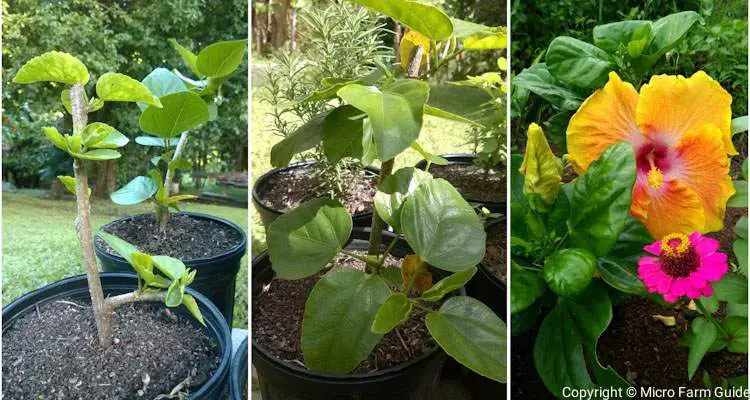
Years later, I still enjoy propagating plants. Yet, some varieties can be challenging at times.
In this article, I’ll share with you the simple process I now use to grow hibiscus from cuttings and some tips which can save you from unnecessary frustration.
Before You Start…
You’ll have to ensure that you choose a variety of hibiscus that is well suited to your region.
For example, you should choose a perennial, hardy variety that can withstand harsh winters if you live in a cold climate.
These plants seem to die off during cold weather but resprout from the roots the following year as the soil warms up.
On the other hand, tropical hibiscus varieties are warm-weather plants with low tolerance to the cold.
They are both easy to grow from cuttings and are available in an assortment of beautiful colors. With this in mind, let’s move on to the first step.
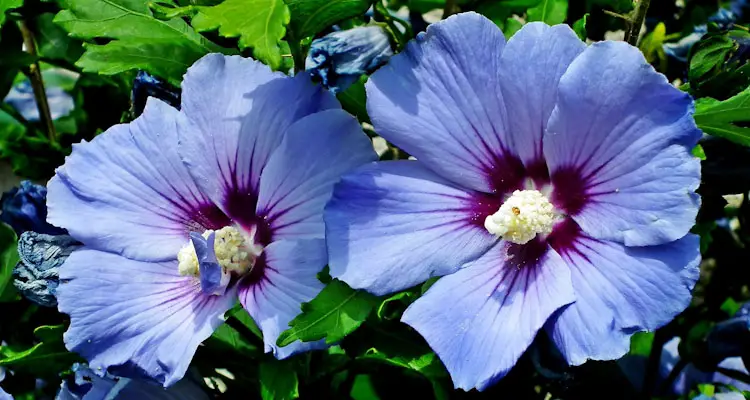
1. Collect The Materials You Will Need
The best way to propagate hibiscus is by using cuttings. This will ensure that the new plant has the same qualities as the parent. Here is a list of items you will need to create your new plants.
| Item | Description |
| Mature Hibiscus Plant | Choose from either tropical or hardy varieties. |
| Sharp Pruning Shears Or Knife | Ensure that the cutting tool is sharp and clean. |
| Potting Mix | Use a high quality, free draining potting mix. |
| Coarse Sand, Perlite, Etc. | Add to potting mix or soil to enhance drainage. |
| Container With Drainage Holes | Use a wide shallow container |
| Large Clear Plastic Bag | Ensure it is large enough to cover the container and cuttings. |
| Rooting Hormone (Optional) | Use either commercial formulation or cinnamon powder. |
2. Prepare The Growing Media
The growing media for the cuttings needs to be well-drained, aerated, and able to retain moisture.
You can mix garden soil and coarse material, such as river gravel, provided you do not have issues with fungal diseases in your area.
If uncertain, place the soil and gravel mixture in the sun for a day or two, or heat it in the oven at 360° for a few minutes, just in case.
Alternatively, you can mix some additional perlite or vermiculite into a quality potting mix.
Afterward, moisten the mixture and place it into the shallow container. Tap the container gently to allow the mixture to settle without compacting.

3. Take Hibiscus Cuttings From Mature Plants
Select straight, semi-hardwood sections of the hibiscus plant that are about the thickness of a pencil. These are the firm but slightly flexible parts of the plant.
Cut pieces of branches about 4 to 6 inches long, ensuring that you cut below a leaf node at a 90° angle. Don’t worry if it is not exact. Just ensure it is cut at an angle.
I like to scrape either side of the cutting to about ½ inch up from the node. This encourages additional root development.
Hibiscus plants root relatively easily from semi-hardwood cuttings. However, some people like to use new growth. I’ve not had any success with this part of the plant, but feel free to experiment.
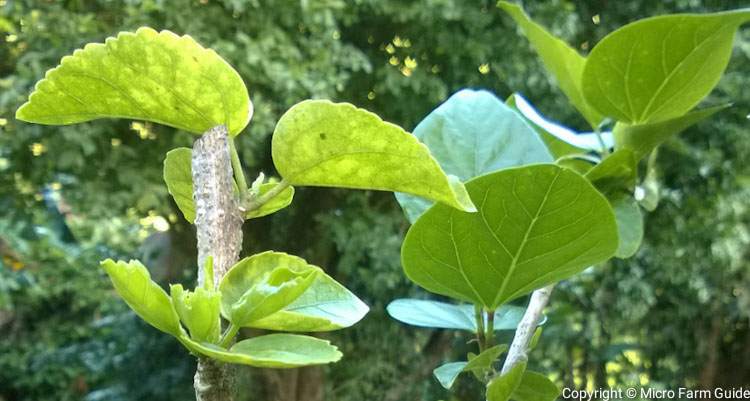
4. Root Hibiscus Cuttings
Poke a hole in the growing media, dip the tip of the hibiscus cutting in rooting hormone, and place it into the hole.
You do not need to use a rooting hormone. Still, it helps to stimulate root growth while protecting the cutting from harmful microorganisms.
I use Miracle-Gro Fastroot or just about any generic rooting products that is available at the local garden centers at the time.
However, you can also try cinnamon powder or other natural solutions to see which you prefer.
Alternatively, you can root hibiscus cuttings in water. But I’d only do this to monitor the root development, since it roots easily in soil.
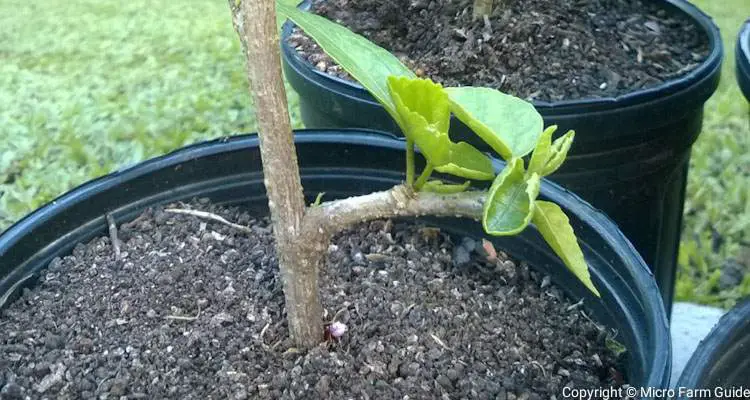
5. Grow Hibiscus Cuttings In A Shaded Area
Water cuttings and place the container into a large clear plastic bag to help retain moisture. Place them into a shaded area.
It will help if you inserted three long sticks along the inner edge of the container to help support the bag, keeping it away from the cuttings.
I now use a large transparent container with a lid instead of plastic bags. It is much easier to monitor the plants and can be used for multiple plants at once.
Examine the cuttings occasionally for signs of new growth and to ensure that the growing media is moist. Remove any pieces that become black or show signs of dying.
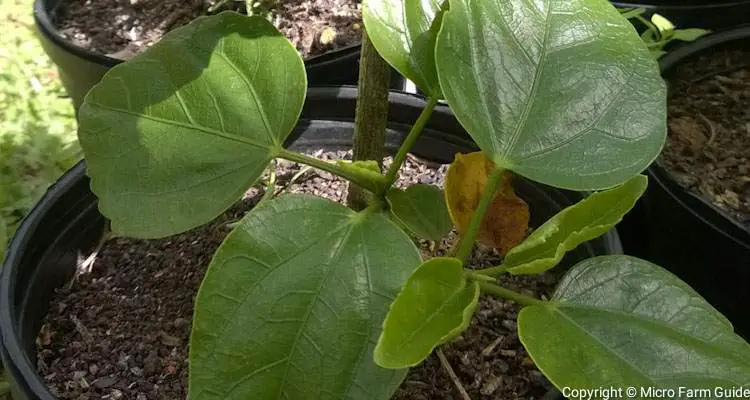
6. Transplant Rooted Cuttings
Hibiscus plants take about 4 to 6 weeks to root correctly, after which you should transplant your cuttings into the ground or pot.
Remove the rooted hibiscus from the container and look at the roots. Ensure there are no signs of disease.
Place the cutting into individual pots with a quality potting mix. You can also mix garden soil, compost, and coarse material such as perlite to create a balanced potting soil.
Ideally, you should first transplant your cuttings into pots, then plant them in the garden after their roots are well-developed.
Gradually increase the plant’s exposure to direct sunlight by an hour every other day until they can safely remain outside all day long.
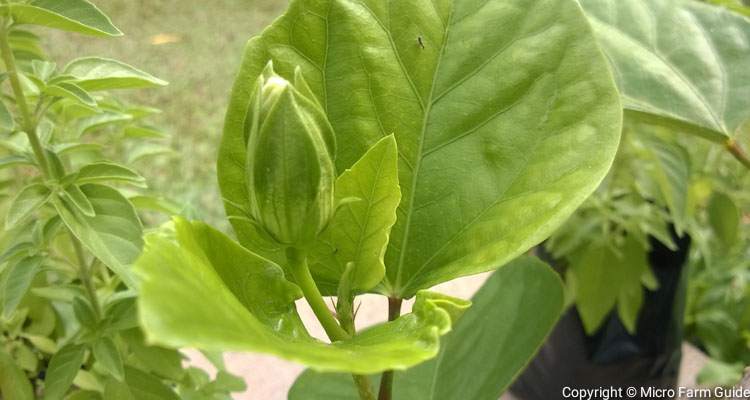
How Long Does It Take To Grow Hibiscus?
Hibiscus plants take 2 to 3 years to reach their mature height, which can vary between 4 and 12 feet.
The growth and final height depends on the variety, soil, and general growing conditions.
For example, hardy varieties die off during the winter and regrow to their “mature height” almost yearly. While tropical varieties usually maintain their height throughout the year.
However, some potted plants grow much slower, even after transplanting. This is the case with one of my plants which has remained under 2 feet tall for the last 5 years.
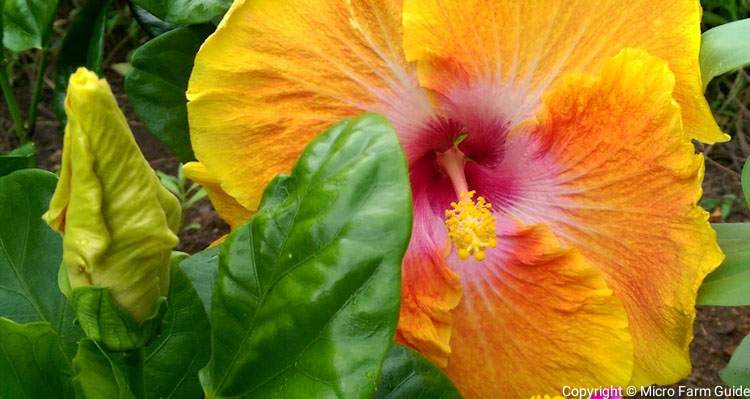
Related Questions
Can I grow a hibiscus from a cutting?
Yes, you can grow tropical and hardy hibiscus plants from cuttings, especially if you wish for them to produce the same flowers as the parent plant.
Where do you cut hibiscus to propagate?
Cut a 4 to 6-inch piece of hibiscus branch about ¼ inch below the bottom leaf node to get a suitable cutting.
Can you root hibiscus cuttings in water?
Yes, you can root hibiscus cuttings in the water and expect to see new roots within 4 to 7 days, depending on the variety, part of the plant, and temperature.
What is the best way to propagate hibiscus?
The best and most reliable way to propagate hibiscus is to use cuttings. These are easy to grow and produce exact copies of the parent plant.
How long does it take to propagate hibiscus in water?
Hibiscus cuttings take 3 to 4 weeks to develop a proper root system in water. New root growth is expected within the first 7 days if done correctly.

